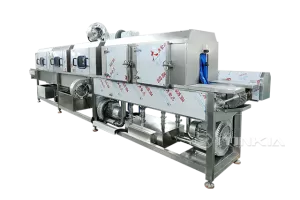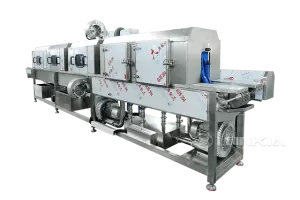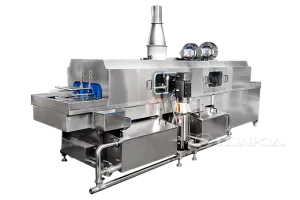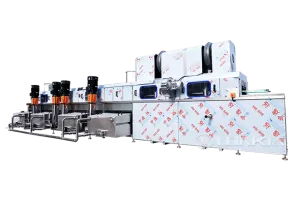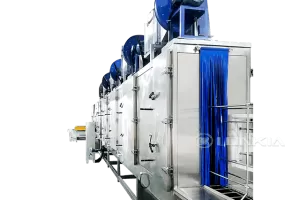A pallet washer is a critical piece of equipment in industries such as food processing, logistics, pharmaceuticals, and manufacturing, where hygiene and efficiency are top priorities. These machines ensure that plastic and metal pallets are thoroughly cleaned, reducing contamination risks and maintaining compliance with HACCP, FDA, and ISO hygiene standards.
However, to maximize the lifespan and efficiency of a pallet washer, proper maintenance is essential. Neglecting regular upkeep can lead to mechanical failures, increased downtime, and costly repairs. In this guide, we’ll explore key maintenance practices that will help you extend the life of your pallet washer while ensuring optimal performance.
🔹 Why Regular Maintenance Is Essential for Your Pallet Washer
A well-maintained pallet washer not only extends the machine’s lifespan but also:
✅ Ensures consistent cleaning performance – Prevents buildup of dirt and contaminants.
✅ Reduces downtime – Prevents unexpected breakdowns that could disrupt operations.
✅ Lowers repair costs – Identifies small issues before they become major problems.
✅ Improves energy and water efficiency – Keeps the system running optimally.
✅ Complies with hygiene standards – Ensures compliance with food and industrial regulations.
🔹 Example:
A food processing plant that implemented a preventive maintenance schedule for its pallet washers reduced breakdown-related downtime by 40%, increasing overall productivity.
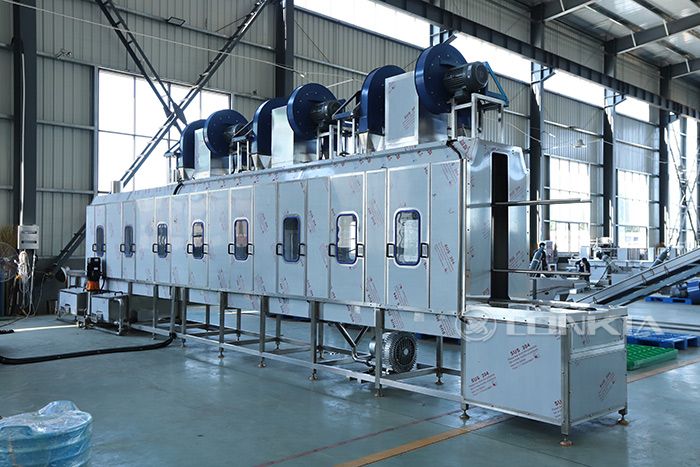
🔹 Daily Maintenance Checklist for Pallet Washers
To ensure your pallet washer operates efficiently every day, follow these daily maintenance steps:
✅ Inspect and Clean the Spray Nozzles
✔ Remove any food residue, grease, or debris that may clog the nozzles.
✔ Use a soft brush or compressed air to clear blocked nozzles.
✔ Check for signs of wear or damage, replacing faulty nozzles immediately.
🔹 Why?
Clogged nozzles can reduce water pressure, leading to inefficient washing and incomplete sanitation.
✅ Check the Water Filtration System
✔ Ensure filters are clean and free from debris.
✔ Replace clogged or worn-out filters to maintain water quality.
✔ If the system includes water recycling, check for proper filtration function.
🔹 Why?
Dirty filters can cause water contamination, leading to poor washing results and potential food safety risks.
✅ Inspect the Conveyor System
✔ Look for loose or damaged belts, rollers, or chains.
✔ Ensure the conveyor is moving smoothly without jerking or misalignment.
✔ Lubricate moving parts as specified by the manufacturer.
🔹 Why?
A faulty conveyor system can lead to improper washing, increased wear and tear, and potential machine breakdowns.
✅ Verify Detergent and Chemical Levels
✔ Check if detergent or sanitizing agents are at the correct levels.
✔ Refill as needed to maintain proper cleaning and disinfection.
✔ Ensure detergent concentration matches manufacturer recommendations.
🔹 Why?
Insufficient detergent can lead to incomplete cleaning, while overuse may cause chemical buildup and damage internal components.
✅ Run a Test Cycle
✔ Perform a short test run to ensure all systems function properly.
✔ Observe water pressure, temperature, and washing cycles.
✔ Listen for unusual noises, which could indicate potential mechanical issues.
🔹 Why?
A test cycle helps detect small issues early, preventing major breakdowns during peak production.
🔹 Weekly Maintenance Tasks
✅ Deep Clean the Interior and Exterior
✔ Remove scale buildup, grease, and mineral deposits from the washing chamber.
✔ Use food-safe descaling agents to prevent residue accumulation.
✔ Wipe down the external surfaces to remove dust and moisture.
🔹 Why?
Dirt and grease buildup reduce efficiency, leading to higher energy consumption and poor washing results.
✅ Inspect Heating Elements and Temperature Sensors
✔ Check the heating elements for corrosion or scale buildup.
✔ Ensure the temperature sensors are accurately displaying water temperature.
🔹 Why?
Inconsistent temperature control reduces the effectiveness of washing cycles, making it harder to remove bacteria and contaminants.
✅ Check Pumps and Water Pressure Levels
✔ Inspect pumps for leaks, unusual noises, or weak water pressure.
✔ Tighten any loose fittings and replace worn-out pump seals.
🔹 Why?
A failing pump can lead to inefficient washing and longer cleaning times, affecting productivity.
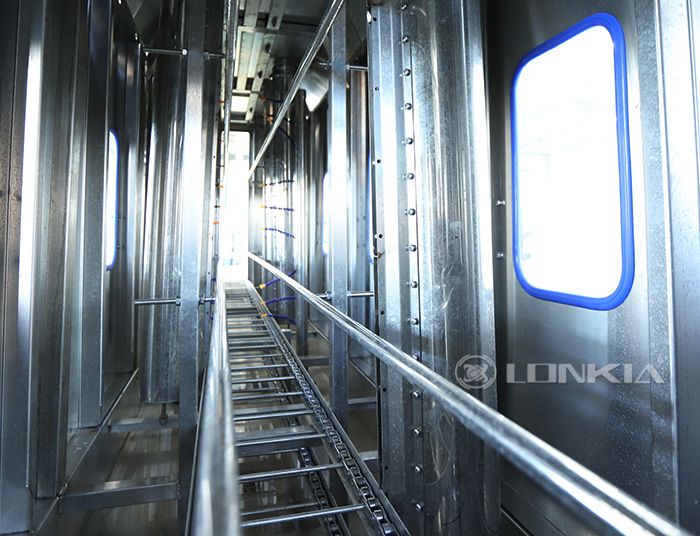
🔹 Monthly Preventive Maintenance
✅ Inspect the Electrical System
✔ Check wiring, fuses, and control panels for loose connections or signs of overheating.
✔ Ensure emergency stop buttons and safety sensors are functioning.
🔹 Why?
Electrical issues can cause unexpected shutdowns, leading to production delays and safety hazards.
✅ Lubricate Moving Parts
✔ Apply manufacturer-recommended lubricants to bearings, chains, and motors.
✔ Avoid over-lubrication, which can attract dust and debris.
🔹 Why?
Proper lubrication reduces friction and wear, extending the machine’s lifespan.
✅ Evaluate Water and Energy Consumption
✔ Compare monthly usage to identify any sudden increases in consumption.
✔ Investigate possible causes such as leaks, clogged filters, or inefficient heating elements.
🔹 Why?
A spike in water or energy usage often signals an underlying mechanical problem that needs attention.
🔹 Annual Maintenance & Professional Servicing
✅ Schedule a Professional Inspection
✔ Have a certified technician inspect critical components.
✔ Perform a full system calibration to maintain peak performance.
🔹 Why?
Annual servicing prevents unexpected failures and ensures compliance with industry standards.
✅ Replace Worn-Out Components
✔ Identify and replace aging or heavily used parts.
✔ Check for cracked hoses, worn belts, and failing pumps.
🔹 Why?
Replacing parts before failure minimizes downtime and costly emergency repairs.
🔹 Common Signs Your Pallet Washer Needs Immediate Maintenance
If you notice any of these issues, schedule maintenance immediately:
❌ Inconsistent water temperature → May indicate a failing heating element.
❌ Unusual noises → Can signal a clogged pump or worn-out bearings.
❌ Increased water or detergent consumption → Might be due to leaks or inefficient nozzles.
❌ Crates or pallets coming out dirty → Suggests blocked spray nozzles or weak water pressure.
❌ Frequent breakdowns → Indicates poor maintenance or the need for professional servicing.
🔹 Conclusion: Proper Maintenance Extends the Life of Your Pallet Washer
By following a structured maintenance plan, businesses can:
✅ Reduce breakdowns and increase productivity.
✅ Ensure hygiene compliance and food safety.
✅ Lower repair costs and extend machine lifespan.
✅ Improve energy and water efficiency.
At LONKIA Machinery, we offer high-quality pallet washing machines and expert maintenance support to keep your equipment running at peak performance. Contact us today for service plans and spare parts solutions! 🚀


